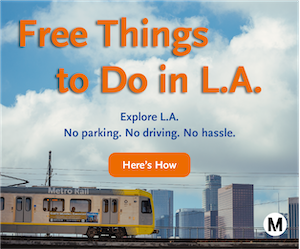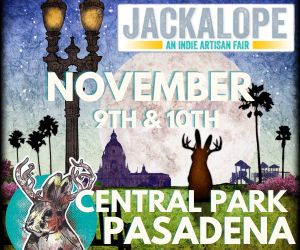The amazing thing about Los Angeles is how we have always been at the forefront of transportation trends. We first had an extensive rail system, then built expansive freeways and now are moving more towards a people’s street environment.
There are a lot of ins and out about Los Angeles transportation history that’ll fascinate you. Not only in how our citizens get from point A to B, but in the evolution of our commercial transit hubs over time. And while none of these facts involve, say, time travel, there are quite a few bits of fascinating information embedded in these stories worth sharing with all angelenos.
[RELATED: 13 Trivia Facts About Los Angeles That Would Surprise Even the Most Knowledgable Angelenos]
Reading up on a bit of history is always good for understanding the origins of our city and gaining a greater appreciate for where we’re at today. Mostly though, you might just learn some cool stuff that not a one of your friends probably knows.
Here are some of my favorites.
Public Transit as Tourist Attraction
Most don’t know that L.A.’s first major tourist attraction was up in the San Gabriel Mountains featuring the Mount Lowe Railway. Built in 1893, a funicular would take travelers up a 2,200 foot ascent at a 62% gradient to reach the 70 room Victorian Hotel known as Echo Mountain House.
Construction immediately began on a second leg taking a serpentine route which included a harrowing circular bridge up to another small development called Ye Alpine Tavern. A fire destroyed the Echo Mountain House in 1905 and the railroad slowly fell into disuse permanently closing in 1938. You can still see remnants and historical displays of the 2nd leg hiking up from Altadena.
L.A. Once Had Over 1,000 Miles of Rail Line
There are very few of us who knew that rail used to be king in Los Angeles, let alone remember we have a system. The bigger surprise is that at one point, our city had the largest interurban operator in the world when Henry Huntington acquired Southern Pacific in 1911. After the merger was completed, Los Angeles had over 1,000 miles of rail line. To put it in perspective, we now only have 87 miles of rail. Just imagine where we’d be now if it wasn’t for Mr Freeway.
Our Metro Bus Fleet is ENORMOUS
Bus service is an afterthought to most Angelenos, especially as we’re seen as the car capital of the world. While it seems like a birthright to own a car, Metro actually has the second largest fleet of buses in North America(behind New York). Furthermore, there are over one million bus boardings a every weekday on Metro. This doesn’t even count our other systems in the county, like the Big Blue Bus or Culver City Bus. Mass transit is in our blood.
The Finishing Line to Route 66
Los Angeles was the western terminus of the fabled Route 66, but few know about its origins as its course was mapped out before way before its existence. A plan was hatched in 1911 knowing the country needed an ocean to ocean connection even though only one in 200 Americans owned a car. The National Old Trails Road was formed as a set of loose connecting pathways from Baltimore to Los Angeles.
Some portions were poorly marked and could generously be called dirt roads. As the growth of the car continued, Route 66 was created in 1926 as a more formal national highway aligned with the St. Louis to LA segment of the National Old Trails Road. In the 1930’s, most of the California portion was rerouted to make it more of a direct route. Now, many incorrect signs label the newer Route 66 as the National Old Rails Road.
The Tunnel Under Griffith Park That Never Was
Most know that the Arroyo Seco Parkway was the first highway built in the Western United States opened in 1940, but it almost became a distant second. The Whitnall Highway was intended to connect the San Fernando Valley with Los Feliz through a two mile tunnel underneath Griffith Park.
Land was acquired in the valley and in 1927, a small portion of it opened off of Cahuenga, but many homeowners were mad at the prospect of losing their homes or having their properties subdivided for the highway. After enough public pressure, the idea quietly died, but most of the property in the valley remains vacant other than the large power lines on top.
The 405 is Really, Really Important to L.A.
There may not be a more important link throughout Los Angeles than the 405. While the freeway didn’t open until the 1960’s, passage between the westside and the valley was severely limited until then. It all started when in in 1875 Isaac Newton Van Nuys and Isaac Lankershim funded the widening of a prior footpath established by the Portola Expedition.
A new road opened in 1930 to better serve automobiles, including the tunnel that still functions along Sepulveda Boulevard today. With some of the valley freeways emerging in the 1950’s the need for a faster pathway through the Sepulveda Pass became necessary and the 405 was birthed, although sometimes we ask what’s the point?
Green Transit
One of Los Angeles’ most ambitious projects was created at the turn of the 20th Century in a venture called the California Cycleway. Its intention was to link Pasadena to Downtown Los Angeles through a raised dedicated bike tollway. Over a mile of the line was built and about six miles of its route were acquired for its right of way.
The cycleway faced problems right away facing battles with the streetcar magnates and a decline in the cycling craze. The line lasted only a few years and some of the land became what is now the Arroyo Seco Parkway
We Once Camouflaged Burbank Airport
There’s no doubt that LAX is the largest commercial airport in Los Angeles, but that distinction was previously held by the Burbank airport from 1930 to 1946. Aviation played a big part in the valley’s growth during World War II, but special tactics were taken to protect our airfields from possible Japanese attack during that.
With the help of Hollywood, the airport was concealed by camouflaged netting along with fake trees and houses to make the landscape appear like a typical rural setting from above. Catwalks were constructed to enable people to walk on top to show there were signs of life. You could say it worked, because the continental US never encountered any aircraft attacks.
105 is Alive
The Century Freeway holds multiple distinctions that maybe not all good. At it’s opening in 1993, the freeway was known to be the most expensive freeway built coming in around $2.2 billion. About half of those costs dealt with relocating residents living in the path of the freeway.
It is also believed to be the last true urban freeway that will ever be constructed due the difficulties of eminent domain. The 105 & 110 interchange is also massive undertaking occupying over 100 acres of land. That’s the equivalent area of ten Rose Bowls.
Santa Monica Lost the Battle to Be L.A.’s Primary Port
It’s common knowledge that the Port of Los Angeles in San Pedro is the busiest port in the United States, but most are confused by the Port Los Angeles sign seen in Santa Monica off the Pacific Coast Highway. As Los Angeles was emerging in the late 1800’s, the battle was on for where our major port would be placed along the coast.
The Huntington’s made their lot by constructing the long wharf off of Santa Monica in 1894 at a length of 4,700 feet, the longest in the world at the time. Meanwhile, the Bannings were dredging up the L.A. River ready to make their case to get federal dollars. Ultimately, San Pedro won out and the wharf in Santa Monica began being dismantled in 1913, lengthening the future commute of Captain Stubing.
What’s your favorite factoid about L.A. transit most people might not know? Let us know in the comments below!


